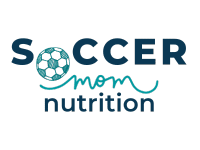Follicular Phase Foods: Ultimate Guide For Female Athletes
As a female adolescent or teen athlete, you may wonder how your menstrual cycle affects your performance and overall health. Knowing the follicular phase foods can help you build your sports nutrition plan.
A healthy menstrual cycle consists of different phases, each with its own hormonal changes and unique nutritional requirements.
Among these phases, the follicular phase holds particular significance as it prepares your body for ovulation.
Are you curious about how to fuel your body during this phase to perform at your best?
In this blog post, we’ll dig into the power of follicular phase foods and explore the essential nutrients that can elevate your athletic performance during this stage.
Let’s discover how eating well during the follicular phase can support your athletic goals and keep you at the top of your game!

Understanding the follicular phase (days 1-14)
The follicular phase begins with your period’s first day and lasts until ovulation when your ovary releases an egg. This phase typically spans 6 to 14 days, depending on your cycle length.
During the follicular phase, your brain releases two hormones called follicle stimulating hormone (FSH) and luteinizing hormone (LH).
These hormones help stimulate the growth of follicles in your ovaries, and one of these follicles will release an egg during ovulation.
Additionally, the hormone estrogen increases during this phase, thickening the lining of your uterus, known as the endometrium.
Why are follicular phase foods important
Nutrition is important in every phase of your cycle, but especially in the follicular phase, because it can help you:
- Replenish the blood loss from your period
- Boost your immune system and prevent infections
- Protect your cells from oxidative stress and inflammation
- Regulate your estrogen levels
- Improve your digestion and prevent bloating and constipation
- Enhance your energy and mood
- Prepare your body for ovulation
Best foods to eat during the follicular phase
To support your athletic performance and health during the follicular phase, focus on foods rich in these nutrients:
Iron and folate
Lean meats, fish, eggs, tofu, beans, lentils and nuts are iron rich food sources. Iron helps transport oxygen to your muscles. Iron deficiency can affect your performance and cause fatigue.
Leafy greens like spinach, kale, cabbage and bok choy are excellent sources of folate and iron. Your body needs folate for DNA synthesis and cell division.
Vitamin C and antioxidants
Boost your immune system and enhance iron absorption with vitamin C-rich foods. Citrus fruits, berries, kiwi, broccoli, bell peppers, and tomatoes are excellent choices.
Additionally, antioxidants found in these foods protect your cells from oxidative stress and inflammation, which can be particularly beneficial during intense training.
Fiber and complex carbohydrates
Fuel your body with sustained energy during exercise by including fiber and complex carbohydrates in your follicular phase diet.
Whole grains like oats, quinoa, brown rice, and barley, along with fruits and vegetables, provide essential fiber and complex carbs.
Fiber regulates estrogen levels and aids in digestion, while complex carbohydrates provide long-lasting energy for peak athletic performance.
Protein
Protein is a crucial building block for your muscles, tissues, and organs, playing a vital role in regulating hormones, enzymes and your immune system.
As a female teen athlete, it’s essential to consume enough protein to support your growth, development, and athletic performance.
During the follicular phase, there are plenty of protein-rich food options to choose from. Consider incorporating lean meats, fish, tempeh, tofu, beans, legumes, nuts, cottage cheese, kefir and yogurt into your diet.
Fermented foods
Fermented foods are transformed by good bacteria, fungi, or microorganisms. They are rich in probiotics, which support gut health. Probiotics can help improve your digestion and prevent bloating and constipation.
Your gut health affects hormone balance, especially during the follicular phase when estrogen is dominant.
Include fermented foods like kimchi, sauerkraut, pickles, kombucha, miso and tempeh.
Omega-3 fatty acids
Supercharge your body with omega-3 fatty acids by incorporating flaxseeds, sesame seeds, sunflower seeds, and pumpkin seeds into your diet.
These healthy fats boast anti-inflammatory properties, benefiting cardiovascular health, reducing muscle soreness and damage and enhancing cognitive function and mood.
Foods to limit or avoid
During the follicular phase, it’s best to limit or avoid foods high in saturated fats, trans fats, high fat dairy products and high sugar foods. These foods can negatively affect your health and performance.
Conclusion
As a teen female athlete, embracing follicular phase foods can be a game-changer for your performance and well-being.
By strategically incorporating nutrient-dense choices rich in iron, protein, vitamin C, antioxidants, fiber and omega-3 fatty acids, you’ll fuel your body for peak athletic performance.
Remember to listen to your body and adjust your nutrition according to your goals and energy and nutrient needs.
Check out our post on luteal phase foods for more information about fueling during the luteal phase.
Stephanie Magill, MS, RD, CD, FAND has over 22 years of experience in public health and nutrition. As a performance registered dietitian nutritionist, Stephanie specializes in sports nutrition and provides simple and actionable information so that athletes can be well fueled for high performance on and off the field. Stephanie has a Master’s Degree in Nutrition and is a Fellow of the Academy of Nutrition and Dietetics.

